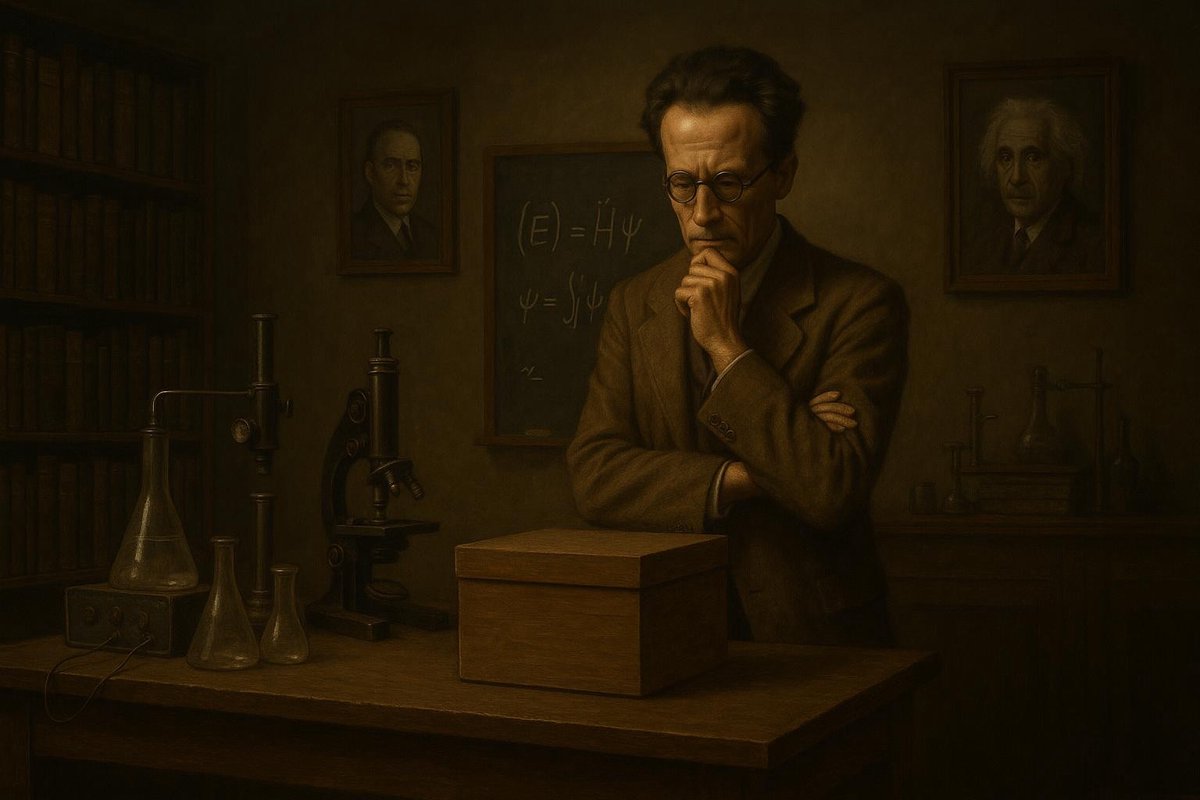
Hypothesis & Context
Imagine a cat that is both alive and dead until observed. This is not a fantastical tale but a thought experiment that challenges our grasp of quantum mechanics. Schrödinger’s Cat, introduced by Erwin Schrödinger in 1935, aims to illustrate the concept of quantum superposition, where particles can exist in multiple states simultaneously. But does this experiment truly illuminate quantum mechanics, or does it simply reveal our own cognitive shortcomings?
- Schrödinger formulated the experiment to critique the Copenhagen Interpretation of quantum mechanics.
- It was meant to highlight what he perceived as the absurdity of applying quantum theory to everyday objects.
Before Schrödinger, scientists like Niels Bohr and Werner Heisenberg proposed that particles exist in all possible states until measured. This interpretation, though groundbreaking, lacked intuitive understanding. Many people believed the paradox underscored this disconnect. As time goes on, we’re left to wonder: does it really clarify quantum mechanics?
Setup & Method
Picture a sealed box containing a cat, a radioactive atom, a Geiger counter, and a vial of poison. If the atom decays, the vial breaks, and the cat dies. If not, the cat lives. Until the box is opened, the cat is theoretically both alive and dead. This setup was Schrödinger’s way to demonstrate superposition dramatically.
- The radioactive atom’s decay is a random event, representing quantum unpredictability.
- The system remains unobserved and thus in a superposed state.
Interestingly, Schrödinger never intended it as a serious proposal but rather as a critique of mainstream quantum thinking. His setup, though hypothetical, forced physicists to confront the bizarre implications of their theories. Of course, no real cats were harmed in the making of this argument. But what does it reveal about the quantum world, if anything?
Results & Reactions
The thought experiment sparked heated debates. Physicists were compelled to reconsider how observables relate to observed phenomena. Bohr, a proponent of the Copenhagen Interpretation, argued that the act of measurement collapses superposition. Yet, Schrödinger’s fictional feline muddied these waters.
- Einstein, a skeptic of quantum mechanics, famously quipped, “God does not play dice.”
- Rival theories like the Many-Worlds Interpretation emerged, offering alternative explanations.
Reactions varied, with some embracing the paradox as a pedagogical tool while others dismissed it as philosophical noise. The broader scientific community grappled with its implications, leading to further exploration of quantum states and the nature of reality. Does this mean Schrödinger’s Cat succeeded in its mission, or has it merely confused us further?
Implications
Schrödinger’s Cat remains one of the most famous thought experiments, raising questions about the limits of human understanding. It highlights the difficulty of translating quantum phenomena into macroscopic terms. Can we ever truly know the nature of superposition, or are we bound by our cognitive frameworks?
- Quantum mechanics continues to influence fields like computing and cryptography.
- Philosophical debates about reality and observation persist in scientific circles.
The experiment’s legacy is one of curiosity and skepticism. It serves as a reminder that science is not just about acquiring knowledge but challenging assumptions. As Schrödinger himself might ask, are we observing quantum truths or merely projecting our limitations onto them?
Ultimately, Schrödinger’s Cat encourages us to push beyond our intellectual comfort zones. It beckons us to explore the quantum realm with open minds and a willingness to question what we hold true.
Fuel Someone Else’s Curiosity
If you found this exploration of Schrödinger’s Cat intriguing, consider sharing it with friends or colleagues. Encourage them to question and explore, just as Schrödinger intended. After all, curiosity is the catalyst for deeper understanding and discovery.

Leave a Reply